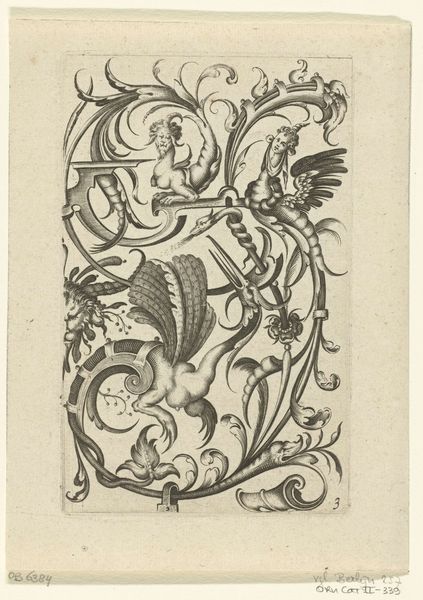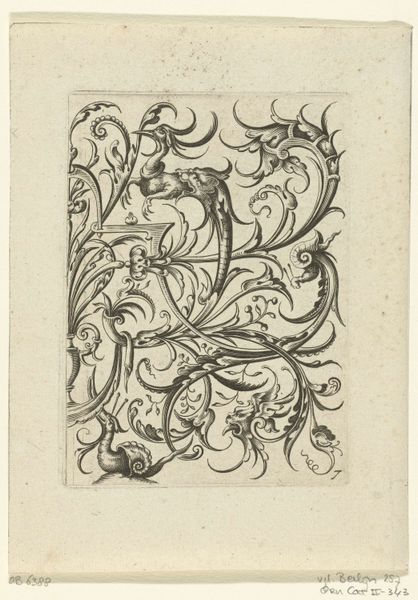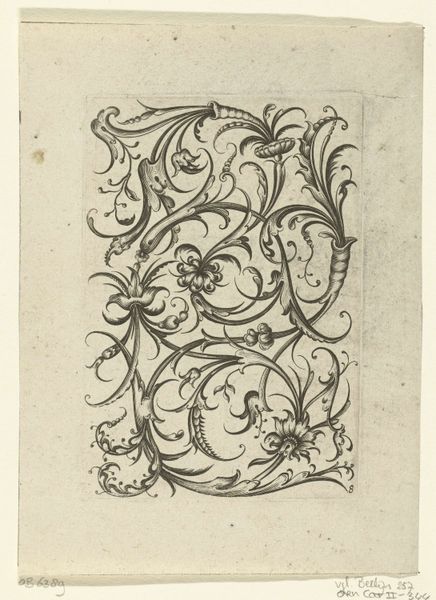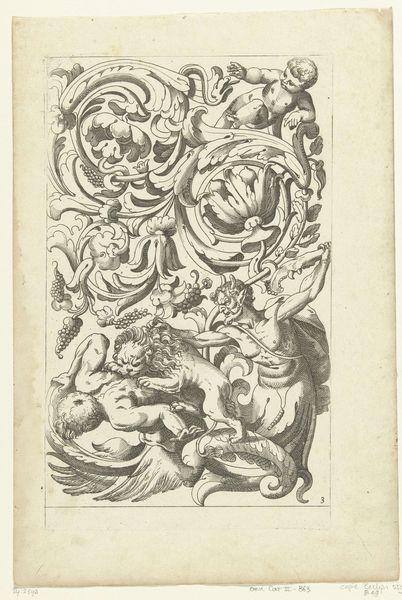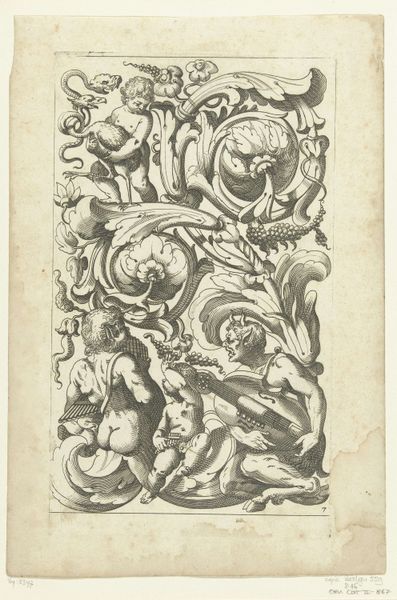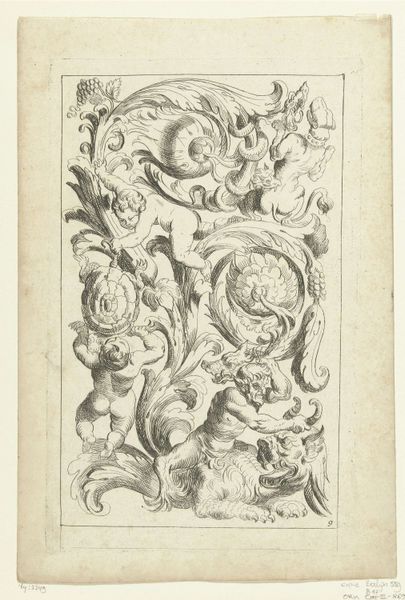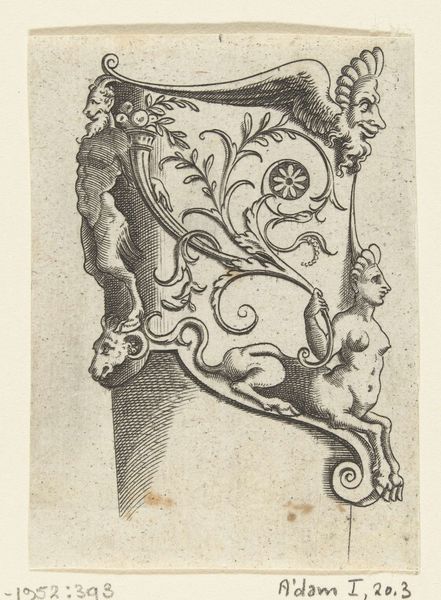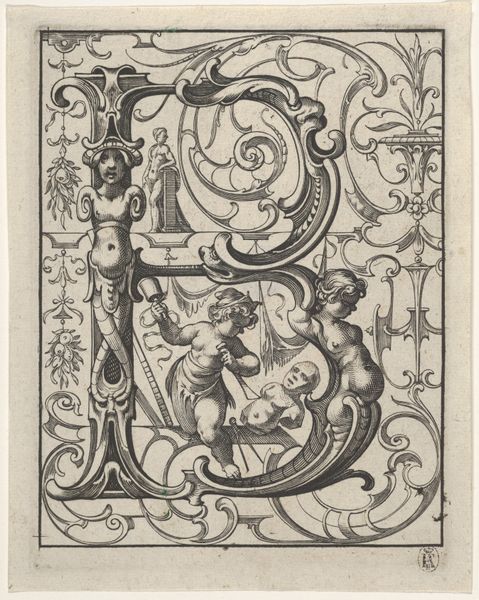
drawing, print, metal, engraving
#
drawing
#
baroque
# print
#
metal
#
figuration
#
line
#
engraving
Dimensions: height 120 mm, width 81 mm
Copyright: Rijks Museum: Open Domain
Nicasius Rousseel created this panel with leaf tendrils ending in two dragons sometime in the 17th century. As a printmaker, Rousseel would have been intimately involved in the economic structure of the art world. This design for a panel is not art for art's sake. It’s a functional template, intended for use by artisans working in other media like metalwork or textiles. The image itself presents a fantastic symmetry typical of the Baroque era, using classical acanthus leaves intertwined with imaginary dragon-like figures. Prints like this circulated widely and played a crucial role in disseminating artistic ideas and styles across Europe. By studying these prints, we can trace the movement of motifs and the evolution of design aesthetics, and access the history of global trade. Understanding the context of production is vital; consulting period pattern books and guild records will reveal the practical applications and the cultural value of Rousseel’s design in its time.
Comments
No comments
Be the first to comment and join the conversation on the ultimate creative platform.

